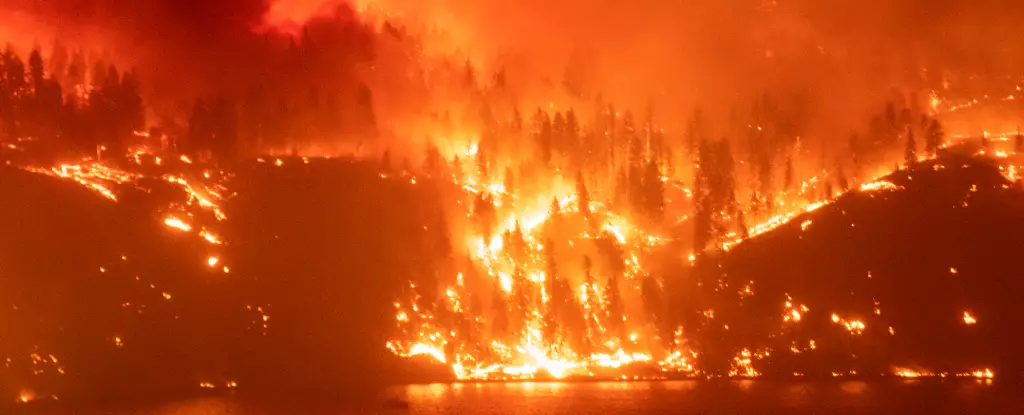As the world grapples with increasingly intense wildfire seasons, the zeitgeist of global concern centers around the devastating flames that engulf communities, forests, and ecosystems alike. From the charred landscapes of Los Angeles to the raging fires of Maui, Colorado, and beyond, the recurring theme of fire is hauntingly familiar. But what underlies this phenomenon? The narrative of humanity’s relationship with fire provides crucial insights, revealing how our practices have set the stage for an epoch that one might call the “Pyrocene”—a period characterized by fire’s dominance over the Earth.
To understand the current state of affairs, one must first recognize that humanity’s entwinement with fire spans over 11,500 years. This coevolution is not merely a tale of usage but a complex interplay that has influenced landscape dynamics across the globe. For millennia, humans have practical applications for fire, from enhancing agricultural yields through controlled burns to clearing land for habitation. Yet, this historical narrative takes a darker turn as modern practices catalyze ecological changes.
It was not until significant depopulation events in the Americas that forests began reclaiming areas previously under human control, leading the world into what is often referred to as the Little Ice Age. This period raises important questions: How can we frame our current era, when fire has returned with a ferocity previously unseen? Are we witnessing a return of natural fire, or are we on the cusp of a fiery crisis spurred by humanity’s excesses?
The Pyric Transition refers to the shift from traditional fire management practices—where fire served as a natural ecological component—to a modern reliance on industrial fire. By combusting fossil fuels, we are not merely enduring the consequences of climate change; we are actively reshaping the planet’s fire dynamics. Where ancient landscapes were shaped and rejuvenated by natural fires, our technological advancements have fundamentally altered this relationship.
Today, we combat wildfires using heavy machinery, industrial engines, and aerial firefighting tactics. Surprisingly, this shift does not mitigate the threat; it frequently exacerbates it. The interplay between ‘living landscapes’—the wild areas prone to natural fire—and ‘lithic landscapes’—those transformed by human industry—often leads to disastrous interactions where conditions for megafires flourish. These fires, significantly larger and increasingly frequent, underscore a critical point: our attempts to suppress fire have inadvertently created landscapes primed for catastrophic burning.
A significant contributing factor to the wildfire epidemic is changing land use strategies. Forest mismanagement, urban expansion, and shifting agriculture practices all drive a wedge between natural ecosystems and human demands. The U.S. government recognized the adverse effects of fire suppression as early as the 1990s, yet strategies to restore ‘good fires’ languished in the face of bad fires—those fueled by decades of accumulated undergrowth and debris.
We must acknowledge that fire does not burn in a vacuum. Rising temperatures, prolonged drought, and human encroachment into fire-prone areas create a perfect storm for wildfires. Instead of addressing the complexities of land use, society often addresses wildfires with surface-level solutions. The complexity of the fire-ecosystem relationship is often downplayed, ignoring the ecological necessity of fire in many landscapes.
As we evaluate the intricate interactions of fire in the Anthropocene, one must ask: What does this mean for our future? The Pyrocene presents an unsettling vision wherein fire becomes an integral part of Earth’s biogeography. Similar to the ice ages that reshaped our planet’s landscape, the current era is characterized by the unfettered release of carbon and the burning of fossil biomass, leading to ecological shifts of a magnitude unseen in millennia.
This new epoch is marked by mass extinctions, altered ecosystems, and an increasingly unstable climate. Each wildfire contributes to a disturbing feedback loop of climate change and ecological disintegration, further emboldening fire’s presence. As fire rages across landscapes, we are redefining our relationship with this primal force—not just as users but as stewards, custodians, and ultimately as the architects of a world in flames.
The reality of the Pyrocene urges us to rethink our fire practices and land use. We must acknowledge that the fire problem is not merely rooted in environmental degradation but also in cultural and systemic oversight. To confront this growing threat, society must embrace a holistic understanding of fire as both a vital ecological process and a perilous consequence of modernity.
The challenge lies in reconciling our reliance on fire, understanding its resurgence, and mitigating its destructive tendencies. If we hope to move forward into a stable future, we must learn from history’s lessons and act decisively—before it is too late.



Leave a Reply